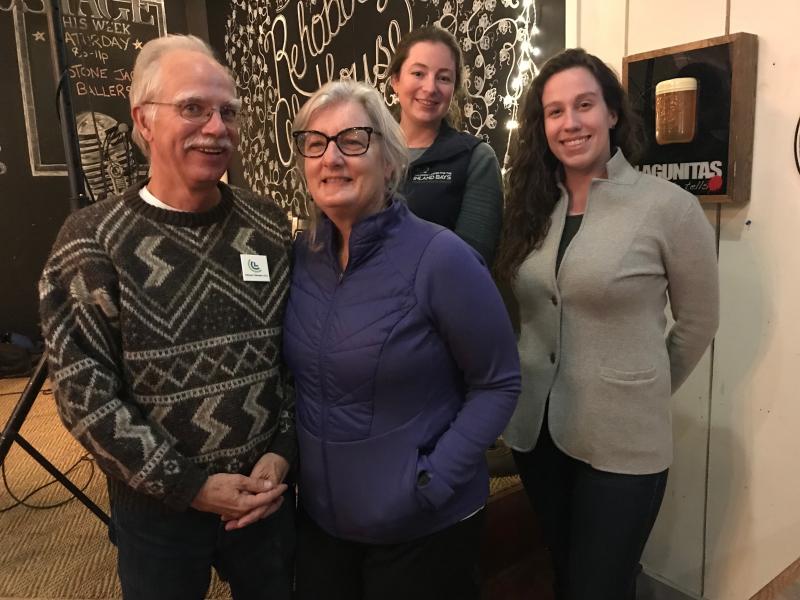Oyster gardening takes over Delaware beaches
Oyster gardening has been a vastly growing hobby over the past year. The process of putting oysters into cages or floats attached to docks, and waiting, is an easy and effective way to improve and clean nearby sites. “Adult oysters can filter 50 gallons of water a day,” said Amy Barra, outreach and education coordinator at the Delaware Center for the Inland Bays.
Barra, the guest speaker at an event put on by the national organization Green Drinks, spoke to a group of curious individuals Feb. 26, about several programs, including oyster gardening, oyster aquaculture, horseshoe crab surveys and reforestation projects.
The Delaware CIB, whose main focus is to preserve, protect and restore the Inland Bays, is one of 28 national estuary programs. “A primary goal of ours is to restore wild oysters into inland bays,” Barra said. The oyster gardening process is simple. Prospective individuals contact the Delaware CIB which then supplies all the required materials and training. “We put oysters in one side of the cage and check back later,” Barra said. “When we check back the oyster side is always much cleaner, not murky.”
Barra went on to reiterate the effortless nature of oyster gardening, saying, “It’s only about 15 minutes of work.” The oyster gardeners typically partake in this process for one year before the Delaware CIB takes the oysters back to a site to continue filtering. Oysters used for gardening are not to be used for consumption.
The Delaware CIB has other programs besides oyster gardening. One is oyster aquaculture, where individuals raise their own oysters. Unlike oyster gardening, the oysters for this program are for consumption. They also participate in a horseshoe crab survey, which “is an amazing event where horseshoe crabs spawn at the tide line and a large group of volunteers go out to collect data to see where the horseshoe crabs go and how long it takes them to get there,” Barra said. An even easier way to volunteer is to participate in the Don’t Chuck Your Shucks shell recycling program. All that is needed is to order oysters or clams at participating restaurants and instead of throwing the shells away, the staff will put them in a bin and a Delaware CIB member will collect them to be used for restoration projects. They don’t stop there. The Delaware CIB is also involved in reforestation events such as tree planting as well as putting on daylong education programs for middle school children at James Farm Ecological Preserve.
When asked about the condition of the areas using the oyster gardening process, Delaware CIB fundraiser Anna Short said, “Some are better, some are not. It depends on the size of the bay. The smaller the bay, the easier it is to show signs of improvement.” She went on to say that Little Assawoman Bay is showing the most signs of improvement out of the local bays.
Charlie Garlow and his wife, Joan Flaherty, Green Drinks organizers, put on this event that was hosted by the Rehoboth Beach Ale House. “We’re trying to help out small businesses by scheduling these events on slower nights. It’s a win-win for both parties,” Garlow said.
For more information go to www.inlandbays.org or call 302-226-8105.
Editor’s note: This story has been edited to correct the capacity of oysters to filter water from 50 grams per day to 50 gallons of water per day.


















































